Windows 8 didn't thrill touchscreen laptop users, as the touchscreen experience felt half-baked. But using touch on a laptop running Windows 10 feels like a bed of roses. Credit goes to the dedicated tablet mode on Windows 10 which makes it more user-friendly.
ContentsHow to activate tablet mode on Windows 101. Hide the taskbar2. Hide only application icons3. Quickly access tablet mode settings4. Use the Back5 button. Open the context menu6. Open the touch keyboard automatically when not in tablet mode7. Launch the touch keyboard from the taskbar8. Enable word prediction for software keyboard9. Change keyboard type10. Automatically launch the handwriting panel11. Enter text into the handwriting panel with your fingers12. SnapApps13. Windows 10 tablet mode gestures Close the app Open Action Center Show hidden taskbar 14. Switch between applications15. Turn auto-rotate on or offBonus Tip:Chrome GesturesDevour the tablet
Even though you can use your touchscreen laptop without venturing into tablet mode, the features offered by this mode make it tempting and appealing. What are these hidden features? Well, prepare to be surprised by this post.
Here you will learn how to use and enjoy the touchscreen on Windows 10 along with the best tips and tricks.
It's fairly easy to do. First of all, tap or click on the Action Center icon present in the taskbar and then select the Tablet mode to activate it. You can also use the keyboard shortcut Winkey + A to activate it. On some laptops, touching the laptop's trackpad with four fingers also activates the Action Center.

Now let's move on to tablet mode shortcuts, tips and tricks.
The taskbar is an important part of a laptop in normal mode. However, we cannot say the same for the tablet mode. If you don't like the presence of the taskbar in tablet mode, you can hide it with the available setting. When you do, the taskbar disappears when you enter tablet mode.
To enable (or disable) the setting, go to Settings> System> Tablet Mode. Enable the "Auto-hide taskbar in tablet mode" button.

If the taskbar icons are distracting you and not the entire taskbar, Microsoft offers a way to disable them in tablet mode.
To do this, go to Settings> System> Tablet Mode. Enable "Hide app icons on taskbar in tablet mode".
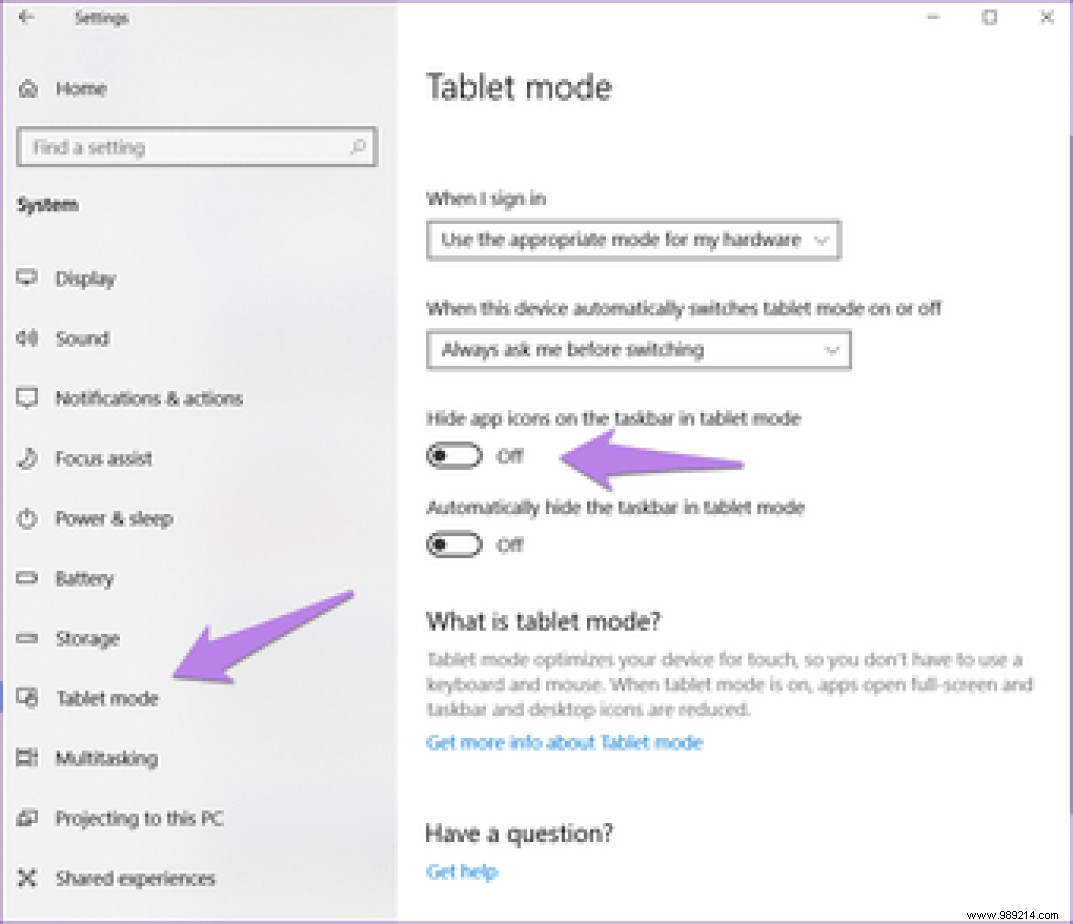
Instead of going to Settings> System> Tablet Mode to open Tablet Mode settings, you can access it directly through Action Center.
To do this, first open the Action Center and then long press on the Tablet Mode option. In the menu, select Go to Settings.

If you look closely next to the start menu, you'll find a back to tablet mode button. Tapping it will return you to previously opened apps. In other words, use the button to go back to previous apps. For example, if you open Chrome and then launch Candy Crush followed by File Explorer, pressing the Back button will return to Candy Crush first, then Chrome.
Note: The button does not function as a back button for or within apps. That is, it is only used to switch to previous applications.
The charm of using a laptop lies in its context menu. Switching to tablet mode in Windows doesn't mean you lose it. Simply press and hold the item (icon, desktop, taskbar, files, etc.) with one finger to open the context menu, also known as context menu. To our delight, the menu has been modified for touchscreen use.

Typically, when you're using your laptop in tablet mode, the touch or software keyboard appears automatically when you tap on a text field. However, if you are using your laptop as a tablet but not in tablet mode, the keyboard will not appear.
To open it automatically even in normal mode, go to Settings> Devices> Input. Scroll down and enable "Show Touch Keyboard when not in tablet mode and there is no keyboard connected" present under Touch Keyboard.
 Note: There may be a slight delay when launching the touch keyboard for the first time (every time). Please be patient.
Note: There may be a slight delay when launching the touch keyboard for the first time (every time). Please be patient. If the touch keyboard doesn't open when you tap a text field, you can also open it from the taskbar. Right-click the taskbar (tap and hold) and enable Show touch keyboard button in menu.
Once enabled, you will see the touch keyboard icon in the taskbar. Tap or click to launch.

I really miss text suggestions on a laptop. Of course, you can also enable it for the physical keyboard, but the suggestions are limited. Luckily, things are different for the touch keyboard as there are over 10 options to choose from.
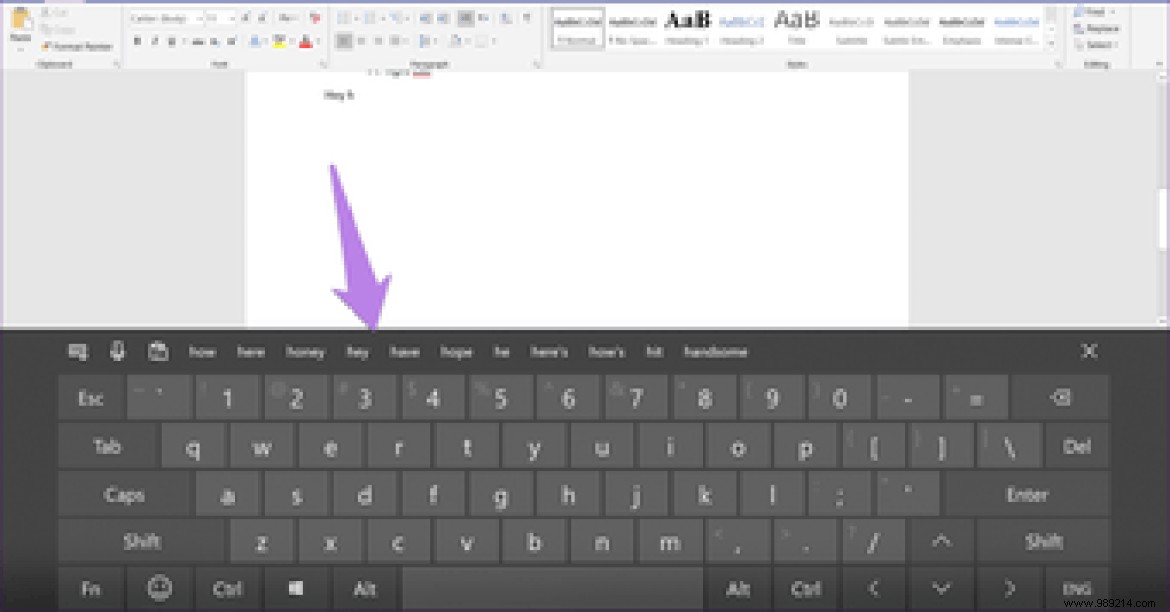
To enable text suggestions, go to Settings> Devices> Input. Enable "Show text suggestions as I type on the software keyboard" present under Input.
 Tip: You can check other touch keyboard settings in Settings> Devices> Input.
Tip: You can check other touch keyboard settings in Settings> Devices> Input. Just as smartphones allow you to change the type of keyboard, Microsoft is generous enough to offer the same capability. For starters, you can detach the touchpad and move it around. Then you can change its size from the available types to suit your needs. You can even switch to handwriting recognition mode.
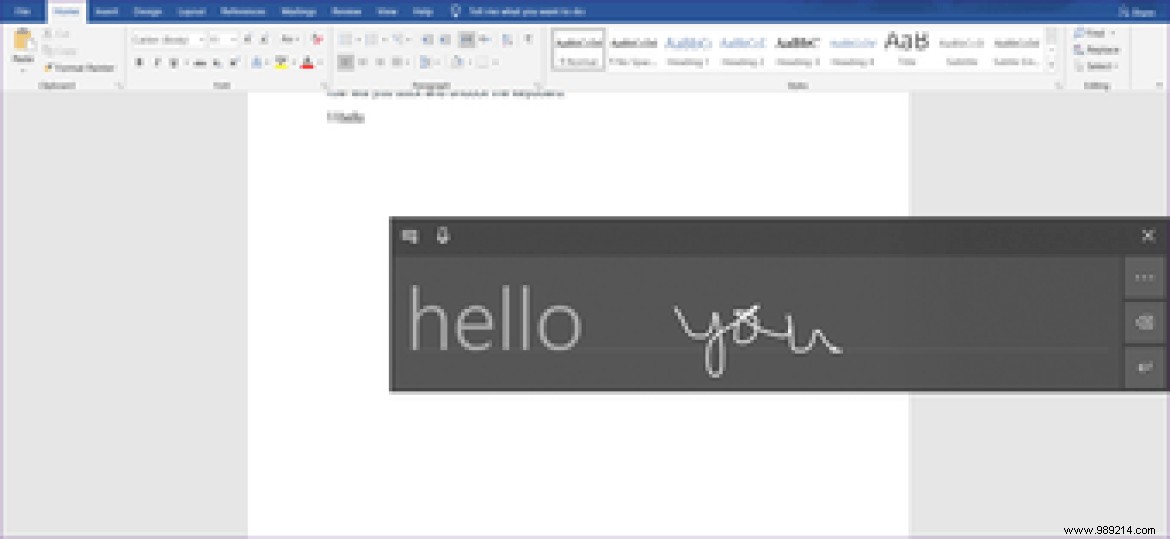
To change the keyboard type, you must first launch the touch keyboard. Then tap or click the little keyboard icon with the little gear. The first row shows different types of keyboards and the second row lets you dock and undock the keyboard.

If your laptop supports input from a digital pen, tap it on any text field to directly open the handwriting panel. Anything you write in this panel will be converted to text format using amazing handwriting recognition.
By default, you can only write with your pen or mouse on the handwriting panel. If you want, you can also use your fingers to write down text.
To do this, go to Settings> Devices> Windows Pen and Ink. Check the box next to the "Write in fingertip handwriting panel" setting.
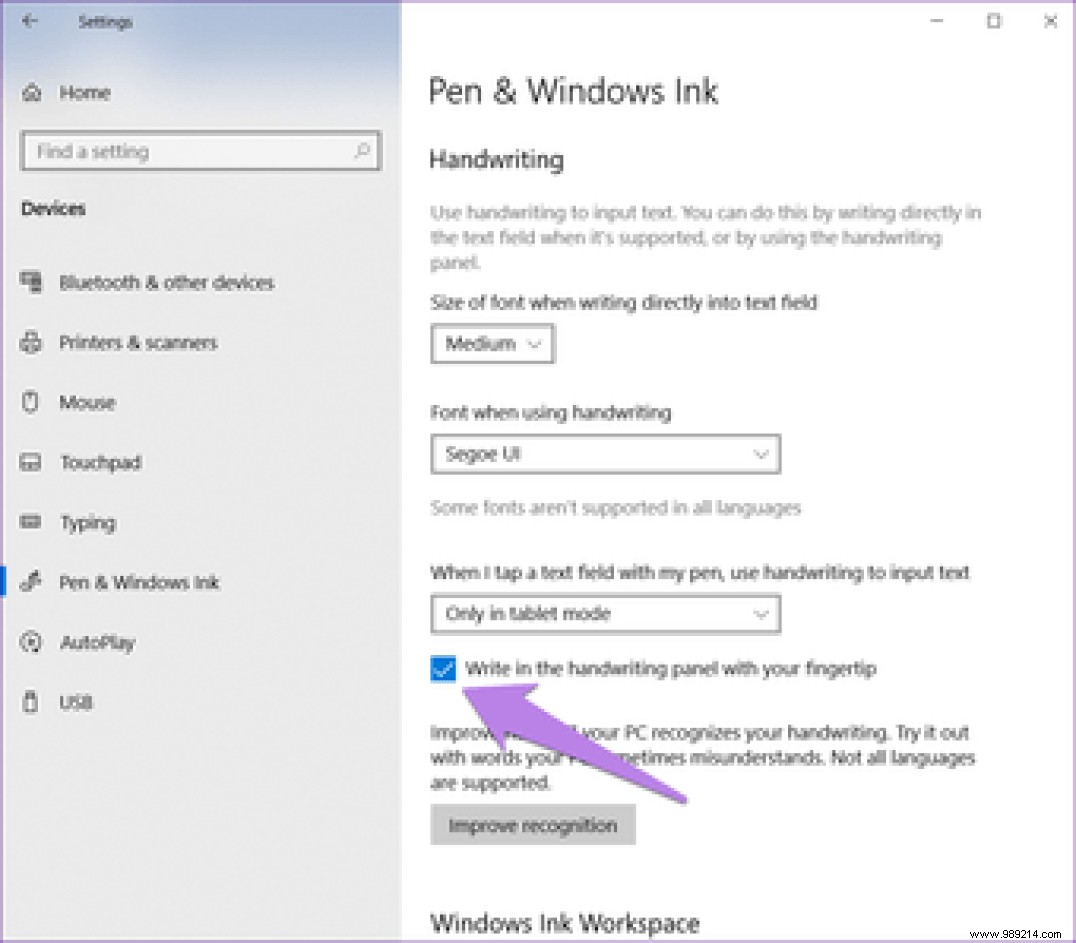
Multitasking is central to the laptop experience, even for tablets. Sure, you can keep multiple apps open at the same time on your tablet, but what if you want to keep them stacked side by side? Similar to laptop mode, you can also capture apps in tablet mode.
For example, you want to watch a live stream on YouTube and at the same time scroll through your tweets without any other distractions. This is where window capture comes in.
To do this, long press the top of the first app and drag it to the top right or top left of the screen. You will see that the window is broken and now you have to choose the second app from the list of open apps. Tap the app you want to open. If the feature doesn't work, follow our guide which includes many fixes.
Tip: Use the separator between the two apps to change their size.
Tablet mode supports the following gestures:
To close a currently open app, hold its top area and drag it down the screen.
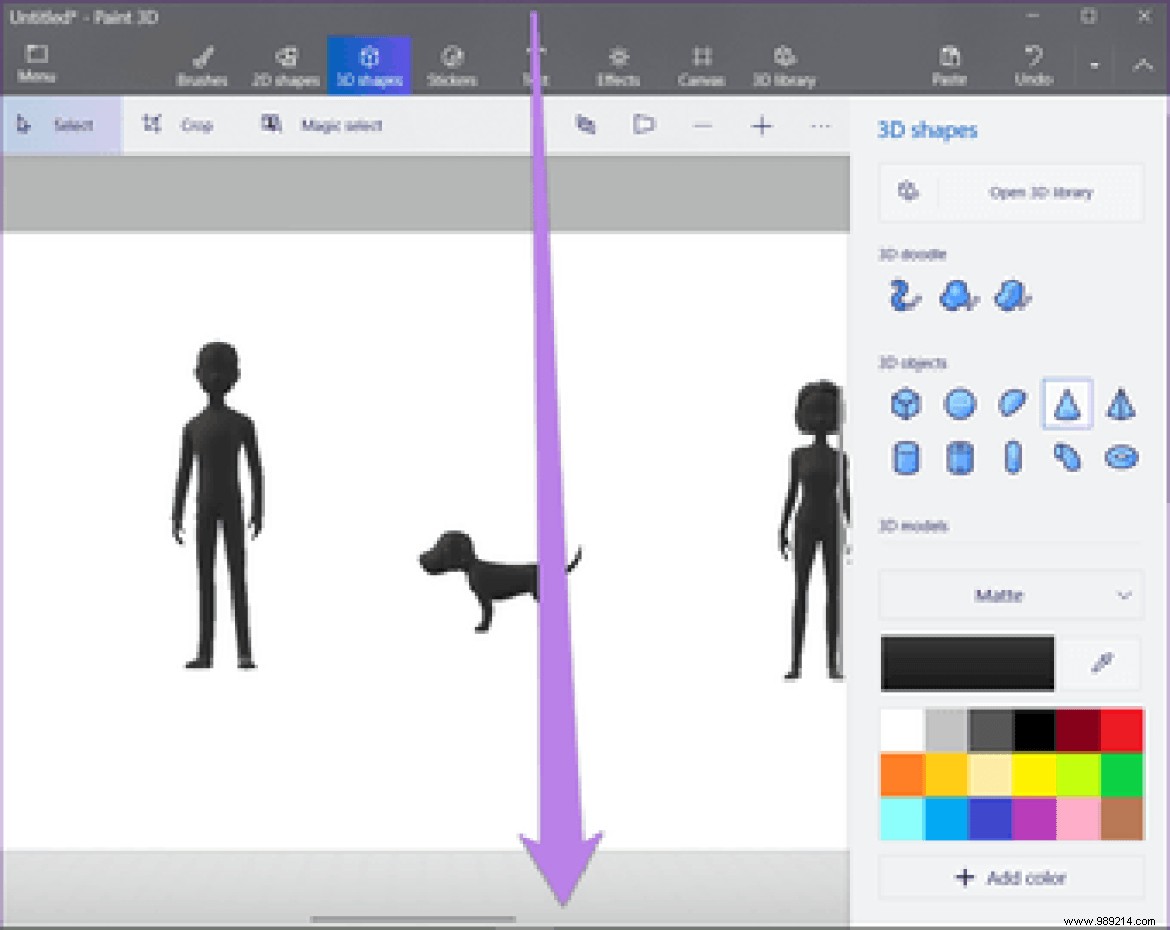
Action Center can be launched without touching its icon in the taskbar. Simply swipe left from the right edge of the screen to open Action Center. This trick also works in laptop mode on touchscreen laptops.
If you want to keep the taskbar hidden, use the swipe up gesture from the bottom of the screen to show the hidden taskbar.
It is quite easy to view recently opened apps on smartphones. Luckily, you can also do the same on your Windows laptop in tablet mode.
Swipe right from the left edge of the screen or tap on the Task View icon present next to Cortana on the taskbar. On the next screen, you will see all your open apps. Tap any app to access it.

In traditional laptops, the screen was always in one direction. Things have changed with convertible laptops, and now rotation plays an important role.
By default, the display orientation changes automatically when you rotate the screen. But if you don't like this behavior, you can disable auto-rotate and lock the current orientation mode.
To do this, open Action Center, then tap Rotation Lock to activate it. When activated, the tile is highlighted. The Rotation Lock tile is only available in tablet mode. In standard laptop mode, the thumbnail will appear grayed out.

When using Google Chrome, you can swipe right or left anywhere on the screen to open the previous page and next page respectively. The feature will soon land on Android phones as well.
The touch experience on Windows 10 blows you away. With the tips and tricks above, you can truly reap the benefits of tablet mode. I really like the gestures and ease of use offered by the tablet mode. Let us know your favorite tablet mode feature.
Next:you want to save space on your Windows 10 laptop. Do it with Storage Sense. Get to know what it is and how to use it.